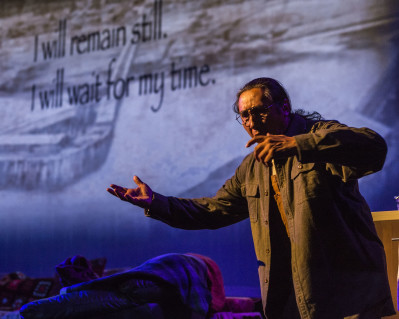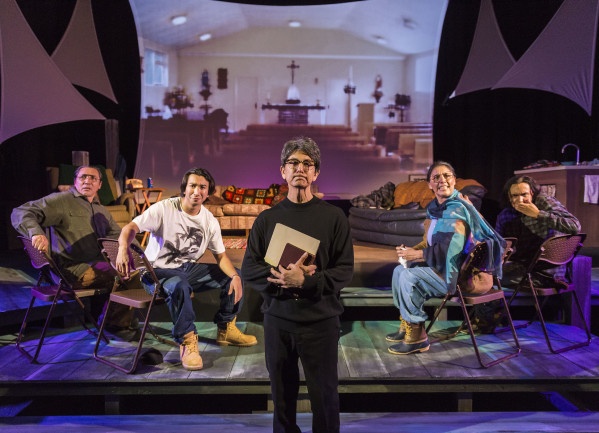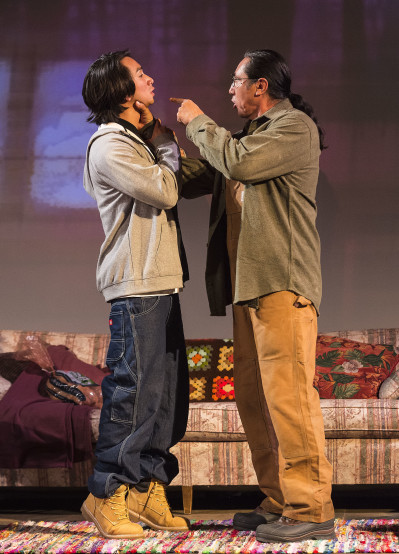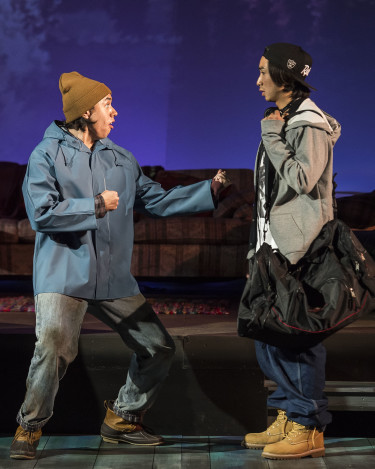INTERVIEW: Documenting Alaska Native life in latest Native Voices production

The Native Voices series at the Autry Museum of the American West presents engaging original work from Native American, Alaska Native and First Nations playwrights. The forward-thinking company has staged numerous important plays over its influential time in Los Angeles.
This month, Native Voices is offering the debut play of Frank Henry Kaash Katasse. They Don’t Talk Back, directed by Native Voices co-founder Randy Reinholz, follows a trouble teenager as he undergoes culture shock in a remote fishing village in Alaska. This character, coming from a broken home, needs to work with and learn from his Tlingit grandparents.
Katasse, Tlingit himself, has taken the play from a mere concept to a full-fledged production thanks to special combination of skill and serendipity.
“This was the first play I ever really wrote,” Katasse said recently in a phone interview. “I had written some short films and things like that here and there, but this was just based off a lot of different things I had observed and experienced living here in southeast Alaska … some of the stories my parents had told me or some of the things I had [seen] traveling to some of these smaller villages around here. And so sometimes I’d just kind of feel inspired, and I’d write a monologue, or a soliloquy, or a poem or something, and then it was kind of just about figuring out how to weave them all together.”

The Native Voices series was not on Katasse’s radar until a chance encounter last year. The theater company offered a workshop in Juneau, Alaska, and the playwright — who was not quite a playwright just yet — was called in to do a reading.
“I went there, and I did the reading,” he said. “And the whole time there was someone from Native Voices sitting there. Finally I walked up to her.”
Here’s how that conversation went with Jean Bruce Scott, co-founder of Native Voices and the program’s executive director.
I go, ‘Hi, I’m Frank.’
She goes, ‘Hi, I’m Jean. I help run Native Voices.’
I go, ‘So, what do you guys do, like plays?’
She goes, ‘Yeah, yeah, we do plays.’
I go, ‘You do like scripts?’
She’s like, ‘Yeah, we do scripts.’ And then she kind of looked me, and she goes, ‘Do you have a script?’
I go, ‘Yeah, I have a script I wrote last year. I had sent it to a bunch of people I knew, and no one responded. So I assumed it was bad.’ …
And she’s like, ‘We have an annual festival every year, and you should enter in it.’
I was like, ‘Oh, OK.’
She goes, ‘You know, put this date in your phone. It’s the day that the things are due.’
I’m like, ‘OK, I’ll fix it up. It’ll be perfect by the time I send it in.’
A couple of months later, the notification on Katasse’s phone went off. The message was simple: “Send in your script today.” The problem was that he hadn’t worked on it, but he decided to try his luck and send in the draft anyway.
A couple more months went by, and Katasse assumed that Native Voices had passed on the material.

“And then sure enough I got a call, them saying, ‘Hey, we love your script, and we’d love to come do a reading,'” he remembered. “And so it was in last year’s festival, and then a month or two after that, they asked if they could produce it. I said, ‘Heck, yeah.’”
Before They Don’t Talk Back, Katasse had been actor. This is his first time as a writer, and he finds the experience “really thrilling.”
“I don’t really get nervous when I act on stage, or screen or anything like that,” he said. “I get nervous when I’m directing something, which I’ve only done a couple of times because it’s so stressful, and this is kind of up there with that, where it’s so exciting because it’s so out of my hands at some points where it’s relying completely on the actors and directors. And they did such an amazing job.”
The playwright said that a lot of theater produced by Native Americans and Alaska Natives have several common themes and images. He referenced the “stoic Indian on a horse,” which, in his mind, is not where the community is right now.
“I wanted to write a piece that was showing relatively contemporary [life],” he said. “It’s set in the ‘90s but showing how people are living in a more contemporary environment while still using some traditional styles of storytelling. And the whole thing, it is set in a remote place, like a remote region of Alaska, so some people will be like, why do I care? … They’re all relatable characters covering universal themes. You know what I mean. A lot of people that I’ve talked to have been like, ‘I knew nothing about Alaska. I knew nothing about your culture, but I watched this play. And I know some of these people.’ And it’s interesting that people are finding these ties how we’re all connected in some way, that we’re all relatable to each other.”

The form of They Don’t Talk Back is unique. Katasse wrote a main storyline involving the teenager heading to Alaska, but the narrative is broken up by “interludes” featuring soliloquies, hip-hop, spoken-word poetry and other forms of traditional storytelling.
“I tried to use a lot of our traditional style of performing arts and weave them into a type of format that can be used for the western stage,” he said.
As far as the Native Voices company, Katasse has a lot of respect for the creative team. He’s impressed by their hard work and dedication to ensure that native people have a voice in Los Angeles.
“A lot of the things they do they end up traveling across the nation, and it’s giving native playwrights and actors a place,” he said. “One of the things I noticed when I got down there is like, you can get lost coming from a village or a reservation … [to] Los Angeles. It’s so just overwhelming, but they create this nest and this family … within Native Voices where they all work together in an ensemble. They’re really dedicated to making sure a native voice is heard in this vast city. It’s a beautiful thing.”
He added: “You always hear of writers going off to a cabin in the woods where they can just sit there, and write, and just focus on their work, and go back to the city and present it. To me, it’s almost the opposite, where I live in a house in the woods, and then I fly to Los Angeles. And I work so intensely on this project, and then I come back to my house in the woods. … I was leaving one home to go to another.”
By John Soltes / Publisher / John@HollywoodSoapbox.com

